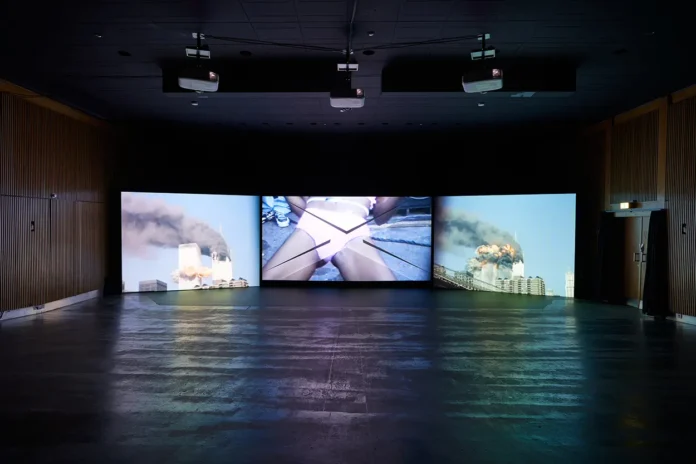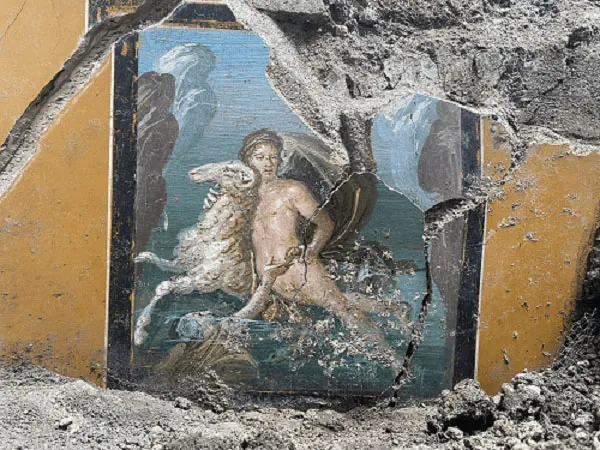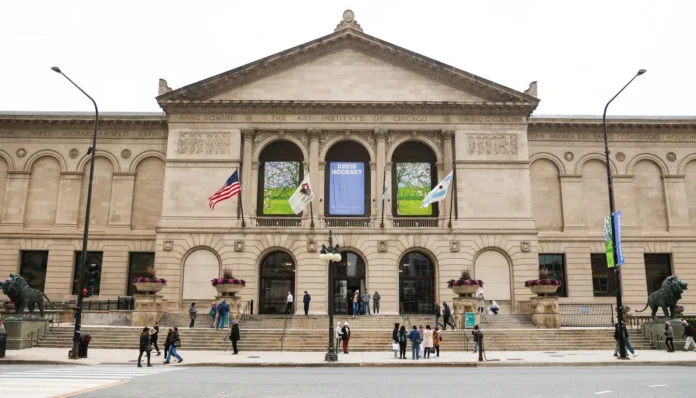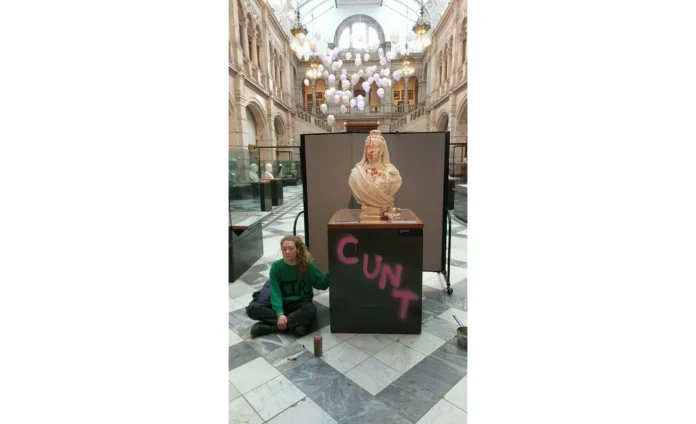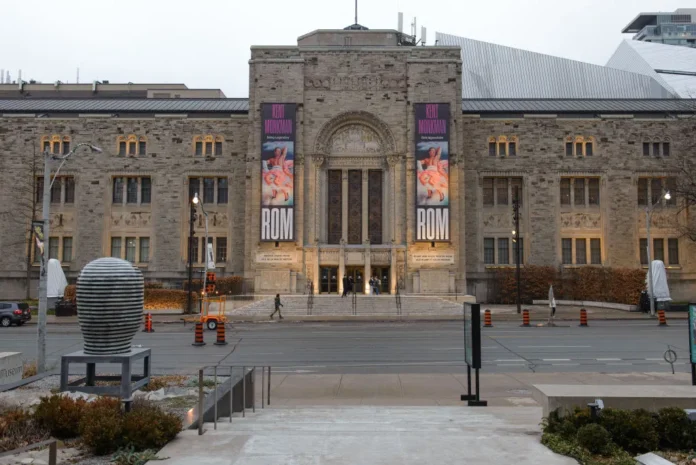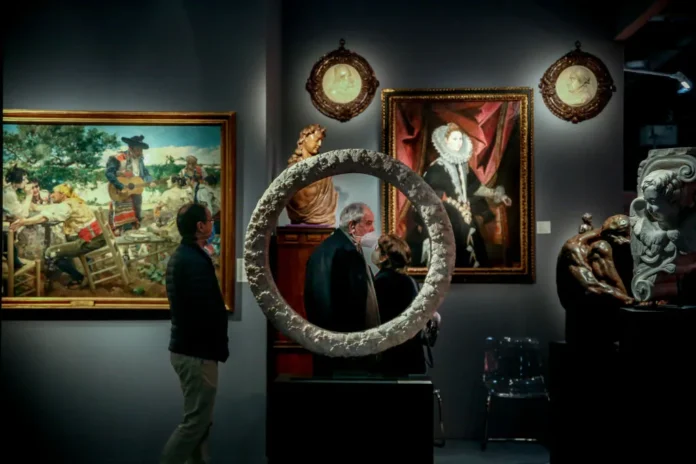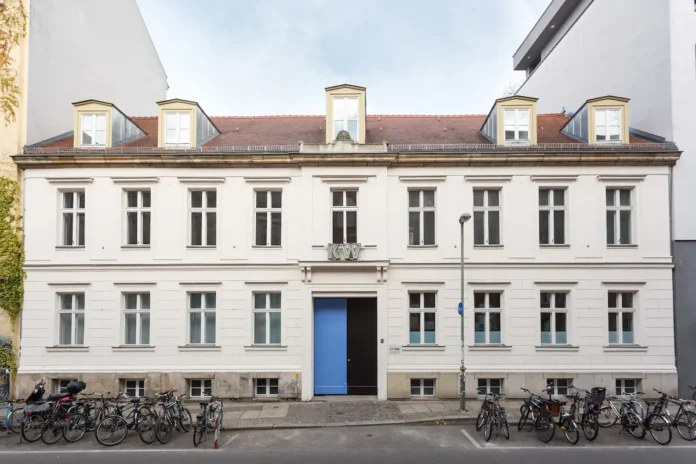An ass, stuck high in the air, jiggles inside fishnets. Then, it multiples threefold, repeating across a projection screen trifecta. Cut to a thong peeking out between the top and bottom of a patterned, vibrant set flecked with yellow and blue. People flash their best moves as dancehall music vibrates through the space, the soundtrack to a portrait of Black joy, the camera mostly capturing derrieres aslidomino.
Akeem Smith gathered this footage as part of his experimental archive of all things dancehall-related. It includes a party that took place on September 10, 2001, then extended into the morning. About 20 minutes into his edit, the sun rises, and twin images of towers clouded in smoke flank the dancers. The attacks have begun, but news hasn’t yet reached the partyers.
The work, titled Social Cohesiveness (2020), is on view in an exhibition at the Julia Stoschek Foundation in Berlin. Here, for the first time in decades, footage of September 11 feels shocking again.
Smith’s work is part of an exhibition titled “Unbound: Performance as Rupture” that surveys performances, from the late 1960s to the present, that are meant for (or completed by) the camera rather than a live audience. There are no live performances, no dry documentation of works once staged before audiences. What we get instead is a grouping of works in which cameras serve as choreographic collaborators, or live pieces that are fully realized only after a visit to the editing suite.

Sanja Iveković’s Personal Cuts (1982) is on view next to Smith’s Social Cohesiveness, and uses a similar editing technique. Wearing black pantyhose over her head, Iveković cuts holes in the dark membrane, then intercuts that footage with scenes sampled from Yugoslav television. As with Smith’s work, the piece resonates for the way it oscillates between the personal and the political: subjects experience their own bodies and, simultaneously, larger sociopolitical contexts. Cutting from establishing shots to close-ups and back again, Smith and Iveković emphasize and obliterate the gulf between them.
It’s one of several intergenerational pairings on view here. Another strong one is the opener, which pairs Peter Campus’s iconic Three Transitions (1973) with Sondra Perry’s Double Quadruple Etcetera Etcetera I & II (2013). The former shows the artist painting his face chroma-key blue before a video camera, which causes it to disappear. Forty years later, Perry filmed two Black performers dancing frenetically in front of a white background. The blurring of the figures in this two-channel piece owes not only to the speed of their movement, but also to the use of an editing tool something like an AI eraser. The result explores the twinned hyper-surveillance and invisibility of Black people in white spaces, Perry’s gesture of opacity serving as counterpoint to Smith’s voyeuristic view.
These pairings of video art icons alongside a younger, more diverse generation of artists helps craft a lineage and a formal vocabulary. They also show how early experimental techniques are now being updated and wielded to new ends.

The youngest artist in the show is Panteha Abareshi, who in Unlearn the Body (2021) enlists assistive devices to contort their bandaged body: a walker becomes a pull-up bar; the padding of a crutch cradles their neck at an uncomfortable angle. Abareshi recorded it all on Super 8, then edited the footage in a manner that betrays the medium’s materiality: the artist has memorably likened the beautiful defunctness of analog media to the experience of being disabled. Mechanisms might work differently, or less efficiently; sometimes, there is elegance in the glitches that ensue. Near Abareshi’s work, a photograph shows Joan Jonas contorting elegantly in a hula hoop, her body illuminated by a TV monitor. Another print shows Valie Export bound around the base of a column, back arched.

All this reminded me of a helpful schema that artist Dara Birnbaum charted out in video art’s early days. She noticed that documentation of performances by the likes of Vito Acconci, Chris Burden, and Joan Jonas, tended to be done in black-and-white. Meanwhile, works engaged with critiquing mass media—several of Birnbaum’s own, as well as those by Antoni Muntadas and Dan Graham—tended to be in color. The artists in “Unbound,” break down this binary, since soon enough, it became impossible to understand oneself as wholly separate from mass media anyway.
That might sound like a somewhat loose theoretical idea, but the show in fact assembles a tight group of works. The line of thinking is much easier to follow than MoMA’s “Signals,” last year’s sprawling intergenerational video art exhibition. What’s more, “Unbound” hosts twenty something works in video, but paces them expertly so it all feels watchable—a curatorial feat I had previously thought impossible. Seating helps.

“Unbound” also includes performances so difficult to capture with a camera that the challenge becomes a creative prompt, as in Algerian artist Lydia Ourahmane’s In the Absence of Our Mothers (2018). The story behind that work begins in 2014, when Ourahmane bit into something soft and lost a troublesome tooth. The next year, she learned moving details about the life of her grandfather, who decided to pull out all his teeth in an act of self-mutilation that rendered him decidedly unfit to fight in World War II. Not long after, the artist met a man at a street market in Oran who tried to sell her a gold necklace, one he said his mother gave to him to sell to support the family. She bought it, then had it melted down into two teeth: one lives in her mouth, and the other on the wall next to a photograph of sorts—a dental X-ray the artist had taken. It’s a wild story, but here, the photograph becomes a kind of proof, all the while insisting this is more than a dental intervention: it’s a meaningful homage.
“Unbound,” then, is a show about the ways the personal and political intersect; about those places where bodies meet technology, but also ideology; and how the everyday rubs up against larger historical narratives. As we once again try to go about our daily lives while learning of relentless horrors through screens, this subject couldn’t be more timely.
